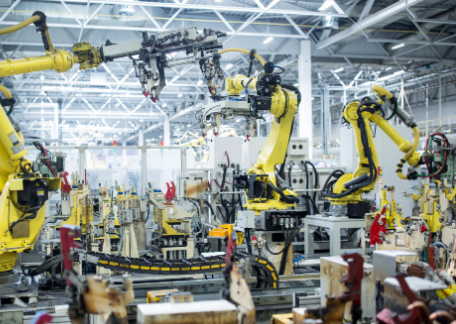Essential Components That Keep Industrial Machines Running

Industrial machines are the backbone of modern manufacturing and production. From automotive assembly lines to food processing plants, these machines ensure efficiency, accuracy, and high output. But behind every smoothly operating machine lies a network of essential components that work together to keep it running. Understanding these components not only helps operators maintain equipment properly but also improves productivity and reduces downtime.
1. Motors: The Heart of Industrial Machinery
At the core of most industrial machines is the motor. Motors convert electrical energy into mechanical motion, powering everything from conveyor belts to robotic arms. They come in various types, including AC motors, DC motors, and servo motors, each suited for specific applications. A well-maintained motor ensures that machines operate efficiently and reliably. Regular inspection, proper lubrication, and monitoring of electrical connections are crucial to prevent motor failure, which can halt entire production lines.
2. Bearings: Reducing Friction, Increasing Longevity
Bearings are small but vital components that reduce friction between moving parts. They allow shafts, gears, and rollers to move smoothly while supporting heavy loads. Without bearings, machines would experience excessive wear and tear, leading to frequent breakdowns. Industrial bearings come in various designs, including ball bearings, roller bearings, and thrust bearings, each tailored for different load capacities and movement types. Proper lubrication and periodic replacement are key to ensuring their longevity.
3. Gears and Gearboxes: Controlling Motion and Speed
Gears are mechanical components that transmit power from one part of a machine to another. Paired with gearboxes, they control speed, torque, and direction of motion. In industrial machines, gear systems are critical for precision tasks such as cutting, milling, or lifting heavy materials. A malfunctioning gear or gearbox can lead to misalignment, noise, and even complete machine shutdown. Routine inspection and timely maintenance prevent costly repairs and extend machine life.
4. Belts and Chains: The Connectors of Motion
Belts and chains are simple yet essential components that transfer motion between machine parts. Belts, often made of rubber or synthetic materials, are flexible and suitable for high-speed operations. Chains, on the other hand, are more durable and can handle heavier loads. Both require regular tension adjustments and inspection for wear. A broken belt or chain can disrupt production, emphasizing the importance of preventive maintenance.
5. Valves and Pneumatics: Controlling Fluid and Air Flow
Many industrial machines rely on hydraulic or pneumatic systems to operate. Valves regulate the flow of air or liquids, enabling precise control of pressure and movement. Components like solenoid valves, pressure regulators, and cylinders are critical in systems ranging from automated presses to packaging equipment. Ensuring these components are clean, free of leaks, and functioning correctly is vital for maintaining consistent machine performance.
6. Sensors and Controllers: The Brain of Modern Machines
In today’s automated industrial environment, sensors and controllers play an indispensable role. Sensors detect variables such as temperature, pressure, speed, and position, feeding this information to controllers that adjust machine operation in real-time. These components improve accuracy, safety, and efficiency. Common examples include proximity sensors, temperature sensors, and programmable logic controllers (PLCs). Regular calibration and software updates keep machines operating at peak performance.
Read Also: Trigrespinx How to Succeed in the Tech Industry
7. Fasteners and Structural Components: The Unsung Heroes
While they may seem minor, fasteners like bolts, nuts, and screws, along with structural components such as frames and supports, hold the entire machine together. Loose or damaged fasteners can lead to misalignment, vibration, or catastrophic failure. Routine checks and proper torque application ensure the structural integrity of industrial equipment.
In Conclusion
Industrial machines are intricate systems made up of numerous interdependent components. Key parts such as motors, bearings, gears, belts, valves, sensors, and fasteners are essential for ensuring smooth and efficient operation. Leveraging CNC turning services allows manufacturers to produce precise, high-quality components that meet exact specifications, helping maintain optimal machine performance. Routine inspection, proper maintenance, and timely replacement of worn parts not only extend equipment lifespan but also improve safety and productivity.
By understanding, maintaining, and upgrading these critical components—often with the precision offered by CNC turning—industries can minimize downtime, boost efficiency, and stay competitive in today’s fast-evolving manufacturing environment.




